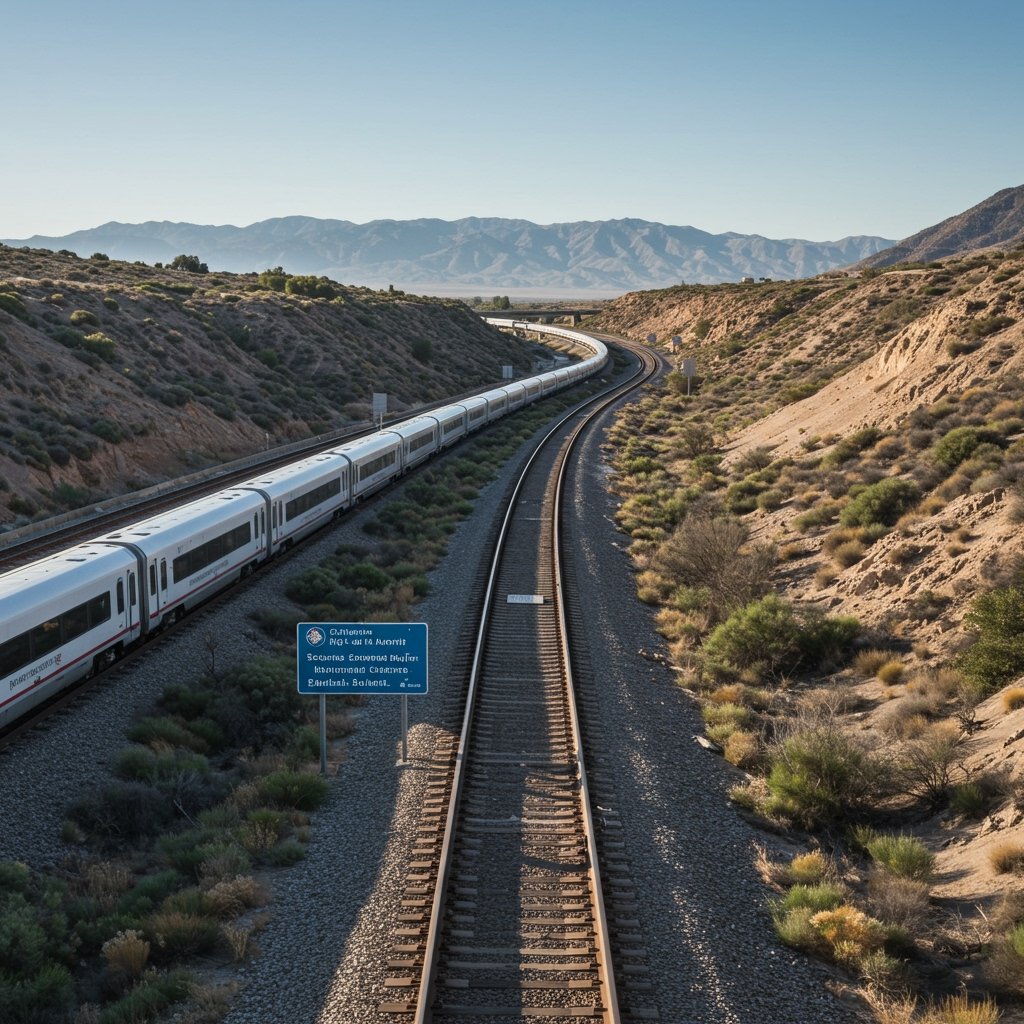Landmark Environmental Approval Granted for Palmdale-Burbank High-Speed Rail Segment
LOS ANGELES COUNTY, CA – In a pivotal decision marking a significant advance for the state’s ambitious transportation initiative, the California High-Speed Rail Authority (CHSRA) board on Friday, June 7, 2025, officially granted crucial environmental approval for the proposed 38-mile high-speed rail segment connecting Palmdale and Burbank in Los Angeles County. This action represents a major milestone, formally clearing the required environmental impact report/environmental impact statement (EIR/EIS) for one of the most technically demanding sections of the planned statewide network.
The 38-mile segment traverses complex and environmentally sensitive terrain, most notably requiring extensive tunneling through the formidable San Gabriel Mountains. The environmental review process undertaken for this section was exhaustive, analyzing potential impacts across a wide range of categories including air quality, noise and vibration, biological resources, geology, water resources, land use, and community impacts. Securing environmental clearance is a prerequisite for using state and federal funds for design and construction activities on a major infrastructure project of this scale.
The Authority’s board, through this vote, accepted the findings presented in the comprehensive environmental document, concluding that the project’s impacts have been thoroughly studied and, where necessary, addressed through identified mitigation measures. This decision allows the Authority to move forward decisively with subsequent phases of project development for this critical link.
Overcoming Significant Engineering Challenges
The Palmdale to Burbank segment is widely recognized as one of the most technically complex portions of the Phase 1 system stretching from San Francisco to Anaheim that still requires significant design and engineering resolution outside of the Central Valley construction that is currently underway. The necessity of constructing substantial tunnels, potentially miles long and at considerable depths, through a seismically active mountain range presents formidable engineering, geological, and logistical challenges. Environmental clearance confirms that the potential impacts associated with these complex construction activities have been adequately assessed.
This 38-mile stretch is strategically vital for connecting the high-speed rail line from the Antelope Valley (where future lines from the Central Valley and Bakersfield will arrive) into the core of the Los Angeles metropolitan area. The Burbank end of the segment is anticipated to connect with the existing transportation hub at Hollywood Burbank Airport, facilitating seamless transfers for passengers traveling between the high-speed rail system, conventional rail services like Metrolink, and air travel.
Path Forward: Final Design and Construction Bids
With the environmental hurdle cleared for the Palmdale-Burbank section as of June 7, 2025, the California High-Speed Rail Authority is now poised to advance the detailed engineering and final design work for this segment. This intensive phase will refine the technical plans, including precise tunnel alignments, station locations, and infrastructure specifications, based on the parameters outlined in the environmentally approved plan. Final design is a critical step before construction can begin, ensuring that all technical specifications meet safety, performance, and environmental standards.
Following the completion of final design, the Authority will be able to solicit construction bids from qualified engineering and construction firms. The bidding process is highly competitive and involves evaluating proposals based on technical merit, cost, and schedule. The complexity and scale of tunneling through the San Gabriel Mountains mean that this will likely be one of the most significant and costly construction packages within the Phase 1 project.
The environmental approval represents the culmination of years of technical study, environmental analysis, and extensive public outreach and consultation. The EIR/EIS process involved multiple opportunities for public and agency review and comment, addressing concerns related to potential environmental and community effects. The Authority reviewed all input received and incorporated responses into the final document that was presented to the board on June 7, 2025.
Integrating the Network and Future Vision
This segment is an indispensable link in realizing the vision of a high-speed rail system connecting Northern and Southern California. Once operational, the Palmdale-Burbank line is expected to dramatically reduce travel times between the Antelope Valley and the San Fernando Valley, and subsequently connect seamlessly into the Los Angeles Basin and points south towards Anaheim via planned or existing rail infrastructure. Integrating this section into the broader network is essential for achieving the project’s goals of providing a fast, reliable, and environmentally sustainable alternative to car and air travel between the state’s major economic centers.
While construction is actively progressing on the initial operating segment in the Central Valley, securing environmental clearance for segments like Palmdale-Burbank and others moving south is vital for maintaining project momentum and demonstrating tangible progress towards building out the full Phase 1 system. Future work will also focus on segments connecting Burbank southwards towards Los Angeles Union Station and Anaheim, as well as the complex northern sections from the Central Valley towards the Bay Area.
The Authority’s decision on June 7, 2025, underscores a commitment to navigating the project’s inherent complexities, from engineering challenges to rigorous environmental regulations. Clearing the environmental path for the difficult Palmdale-Burbank segment is a prerequisite for securing necessary funding and entering the construction phase, moving California closer to realizing its high-speed rail future.


















